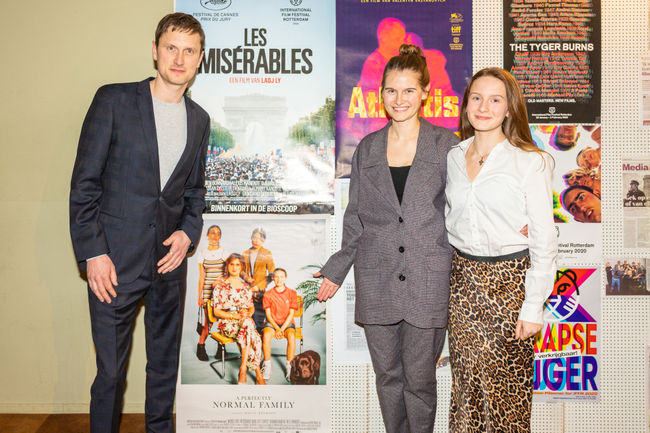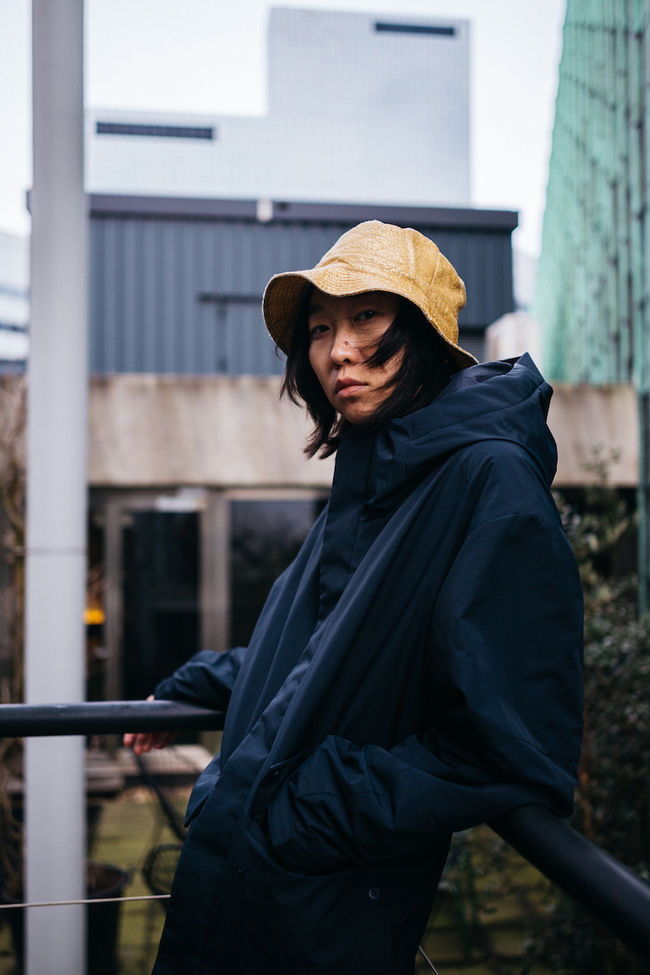Janis Rafa on Kala azar
26 January 2020
Janis Rafa on Kala azar
Dissolving the hierarchies between urban and rural, bodies and landscapes, humans and other animals, and even death and life, Kala azar is the first feature instalment of Greek director Janis Rafa’s singular universe.
In Kala azar, we see an empathetic couple working for an animal crematorium illegally cremate roadkill in their spare time – while the parents of one of them live a calm, secluded life surrounded by dogs. It’s a film with little dialogue, and a lot of room for the viewer to discover this widescreen world of landscapes and bodies, alive and dead, on their own.
While Greek director Janis Rafa is based in the Netherlands, she filmed Kala azar near Athens, just as her previous films (she has been releasing shorts and installations since 2009). However, she is careful never to mention the city by name. These “chaotic, broken-down pieces of land,” as she describes them, could be anywhere. They are her protagonists, as well as the humans and stray dogs that roam those pieces of land.
Your own father plays the father in Kala azar?
“Yes. He’s not an actor, but I have already cast him a number of times. It has to do with childhood memories of the stray dogs my parents took in, and this image of my father as the gravedigger when they died. But this autobiographical aspect is not the most important. The film is about understanding how animals and humans coexist – in the landscape, as roadkill, or in the house – and this idea of noticing the unnoticeable. Animals at the roadside, dead or alive, that are usually passed by. And of mourning a body that is very different to ours, in size and shape.”
I was surprised by the crematorium. Your past work was all about graves.
“Not in a religious way, but yeah, I like working with the earth – I like closing something. So I missed the burials too, haha! [laughs] We had them in Gravediggers and Three Farewells, but this time we wanted to do something different. I wanted to film this weird world that actually exists, this crematorium outside of the city. It’s a shadowy place on the edge of life and death, with fridges full of dead bodies, and a shelter for stray dogs, some of which might find a new owner, and others that are ill and will be put down.”
You often film people and animals in similar ways. For example, after a close-up of dogs’ legs, you cut to legs of a couple having sex.
“It’s about the cohabitation of humans and animals, which gets another layer in the sound design: the people don’t say much, but there’s this constant barking and sniffing in the background. So even when there are no dogs in the frame, you still feel their presence. Just like these abrupt cuts, it has to do with how the cinematographer and I wanted to present this disconnected world. Like when we film a scene inside the car, and we cut from the naked guy behind the wheel, to the woman on the backseat with the dead flies, to a shot of the ashes – we never give you the full overview. You either have to get what happens from the sound, or create it in your mind yourself. For us, it was more about the textures: there is a story, but the camera is interested in something else.”
The nudity you mention helps to see people as animals. Is that also why people and animals in Kala azar both have wounds?
“Yes. It emphasizes the mortality of the body. It’s our great similarity with other beings: we all share this vulnerability to the environment. Our bodies bleed and die easily, whether you’re a dog or a human. The kala azar from the title is an epidemic infection, mostly affecting dogs but sometimes also people, that is actually spreading through these areas. It’s transmitted by mosquitos. So, when you see the guy scratching himself, or pissing over a wound on his leg – yes, it’s possible that he is also infected. But I don’t mean it too literally. It is more a feeling of being threatened and exposed, and of some kind of resistance by nature.”
You even seem to film vehicles as bodies. They need care, like the pick-up truck in Kala azar, and they die, like the capsized ship in Requiem to a Shipwreck.
“Yeah, or like the big truck that crashed in Requiem to a Fatal Incident. They are all ‘bodies’ to me.”
written by Kees Driessen



